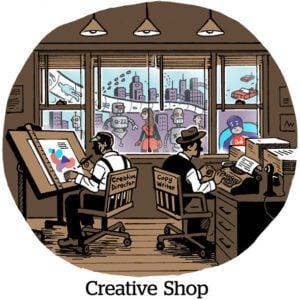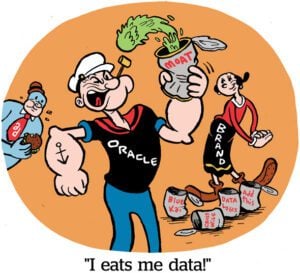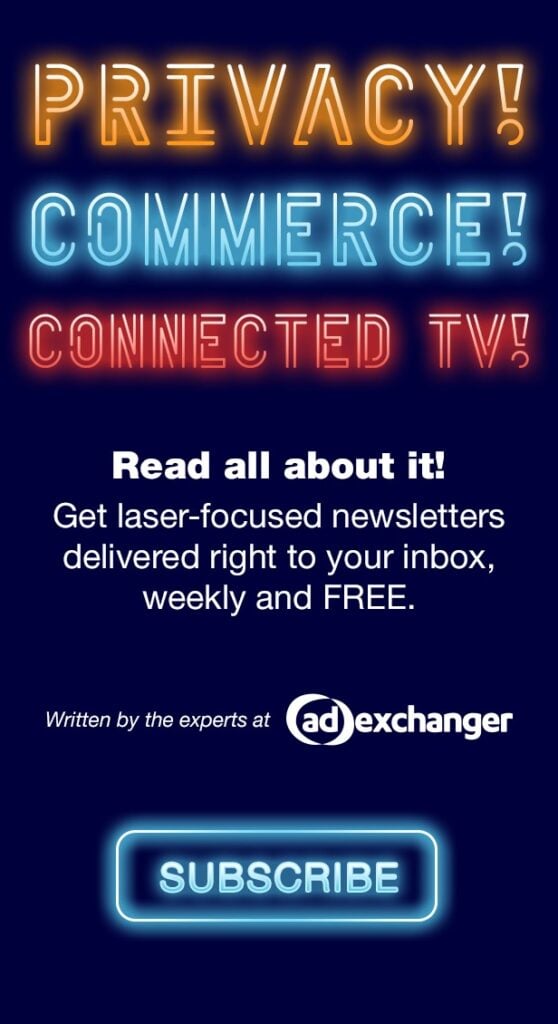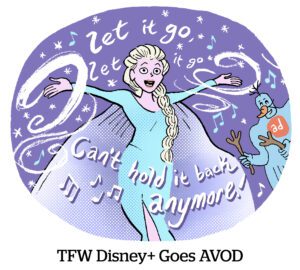While Walmart’s acquisition of Vizio is still pending, the smart TV maker must keep its eye on its own future priorities.
In recent years, Vizio has undergone a metamorphosis, transitioning from a hardware company to primarily a connected TV ad platform. Now, its biggest growth opportunities lie in programmatic ad sales and home screen monetization to sell more supply, said Travis Hockersmith, group VP of Vizio’s advertising platform business.
Behind these growth areas is Vizio’s not-so-secret ingredient: its automatic content recognition (ACR) data.
ACR underpins Vizio’s ad sales because it helps buyers connect what’s playing on screen to actual audiences. Although ACR has some gaps, such as in local TV, it provides a way to measure and target ads across streaming apps on Vizio TVs, which advertisers can’t do when buying from individual apps.
It all comes down to “making the best possible use of our inventory,” Hockersmith said.
I sat down with Hockersmith to learn more about Vizio’s ad sales strategy and what it could mean for Vizio’s future under new ownership.
AdExchanger: What is the biggest home screen value prop?
TRAVIS HOCKERSMITH: Smart TV home screens are a mass-reach vehicle for advertisers.
We’ve seen a lot of demand for home screen supply and sponsorships over the past year because it ensures brands can reach consumers who otherwise only stream ad-free content.
Brands also see the home screen as a place to increase their exposure to viewers without raising the frequency of commercials they run, which is partly a response to shrinking TV ad inventory.
Speaking of frequency, how does Vizio manage ad repetition?
With our ACR data from Inscape [Vizio’s data science subsidiary], which can tell advertisers exactly where their ads ran.
One use case is incremental reach. We can use ACR to run a brand’s ads only on TV devices that haven’t been exposed to the ad yet.
Another use case is for frequency capping. Using ACR, we track the number of times an ad is delivered to particular households, regardless of the demand source. Once a campaign hits the advertiser’s desired frequency, we stop running that ad.
We can’t stop other programmatic platforms from serving the same ad, but we can at least make sure Vizio isn’t contributing to over-frequency.
How does a programmatic advertiser buy Vizio inventory?
By far, the fastest-growing piece of Vizio’s ad sales business is programmatic guaranteed and private marketplaces (PMPs).
A growing number of brands only want to buy us programmatically, so we’ve been doing a lot of integrations with DSPs and SSPs to make our inventory as widely accessible as possible.
But many brands that buy programmatically are also looking for supply-path optimization. So we’re also working with DSPs to create more direct paths to our supply, such as through The Trade Desk’s OpenPath and Yahoo’s Backstage.
How is Vizio incorporating programmatic sales it doesn’t consider direct-sold?
Aside from programmatic guaranteed and PMPs, we also have demand from outside our own ad sales team, such as the open exchange and SSPs.
Advertisers that buy through our managed service or an insertion order get first crack at available ad spots, followed by programmatic guaranteed deals and then PMPs. After those buys are fulfilled, the remaining inventory is available to buyers accessing us through SSPs or in the open exchange.
How will Vizio’s strategy change if and when the deal with Walmart is finalized?
I can’t say because we’re still waiting on regulatory approval. So, right now, we’re business as usual.
Still, there are some pretty clear implications of the deal, such as access to Walmart’s shopper data.
I can’t speak to what data Walmart intends to introduce to us if and when regulatory approval occurs. We don’t have access to Walmart’s shopper data right now.
What I can say is that we’ve gotten used to working with various sources of shopper data and outcomes-based measurement for our existing advertising business.
Over the next year, our priority is improving our data and measurement capabilities to make sure we can give advertisers as much detail as possible about how their ads are performing.
This interview has been lightly edited and condensed.
Are you enjoying this newsletter? Let me know what you think. Hit me up at [email protected].
For more articles featuring Travis Hockersmith, click here.















